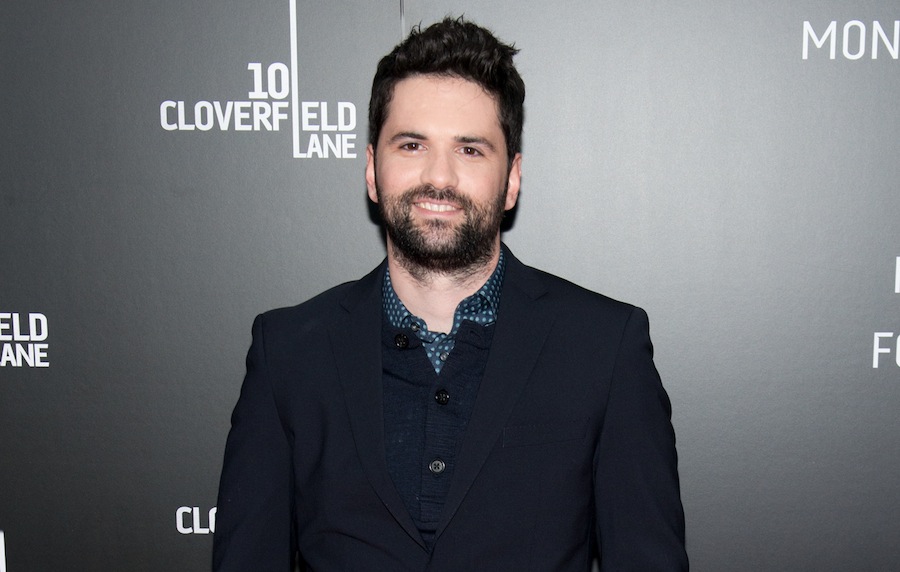Dan Trachtenberg owes “Whiplash” a big thanks. He wound up directing “10 Cloverfield Lane” — the semi-sequel to 2008’s J.J. Abrams-produced alien invasion romp “Cloverfield” — only after Damien Chazelle, one of the writers, decided to make the jazz drummer indie instead. And so the hotly-anticipated thriller, tied to a unique blockbuster, became the 34-year-old Philadelphia native’s feature debut. Trachtenberg first caught Hollywood’s attention with “Portal: No Escape,” a short that became a viral sensation in 2010. (He was also one of the three hosts of the geek-centric podcast/webseries “The Totally Rad Show.”) “10 Cloverfield Lane” allows him to start small: It’s set almost entirely in an underground bunker with only three main characters, including a woman (Mary Elizabeth Winstead) who finds herself the captive of an unhinged stranger (John Goodman), who claims there’s been a mysterious, massive attack above ground. (The third is John G. Gallagher, as one of his neighbors.) We might know where this is going (see: the title), but what happens to them below the surface is plenty scary, too. It wasn’t revealed that this had anything to do with “Cloverfield” until the trailer went online two months ago. Till then it was called “Valencia.” RELATED: Review: “10 Cloverfield Lane” is a crackerjack thriller that works as its own thing This being your first big movie, how nervous were you? You do really get the sense that you storyboarded every shot out. RELATED: Interview: Helen Mirren on “Eye in the Sky,” drones, feminism and Jennifer Lawrence This is also your first time directing name actors. On top of that they have a lot of dialogue. Your work up to this point hasn’t involved either. How did you handle that? RELATED: Interview: Robert Carlyle on directing “Barney Thomson” and staying true to the Scottish accent You were also working with J.J. Abrams. How hands-on was he as a producer? How did he help you out?
That was the codename. It came from a moment during the dinner table scene. Howard [Goodman’s character] gave this really intense, menacing speech about the Siege of Valencia, which he did in one take. It was a great moment, but it was already a really long scene and we were trying to keep the pace up. My editor found this awesome moment when he sits down and gives this odd, creepy, intense look. That look said more than any of those words could say. It’s like that story behind the “Raiders of the Lost Ark” scene, where they had choreographed this whole fight but Harrison [Ford] was sick, so he just pulled out his gun and shoots the guy. It says everything succinctly.
The first shot we did on the movie was the shot of her waking up. It starts as a close-up on her face and wraps around her. We had moving walls, so the shot was this crazy choreographed dance, where the camera wrapped around her and the grips had to fly the walls away then bring them back in. We did so many takes. I felt like the audience watching the movie; I was on the edge of my seat, saying, “Please happen, please happen, I’m an idiot for starting out this way.” I worried it would set the tone for the whole shoot — “Who’s this guy who can’t even get a shot done?” We finally did get it and that was incredibly rewarding.
We only really planned out the first half of the movie. I was so terrified going into the second half, having not totally covered it with my cinematographer [Jeff Cutter]. But by then we had developed our own personal shorthand, and the movie also found its own vocabulary. I had always heard stories about Spielberg and [cinematographer] Janusz Kaminski just walking on the set, having that creative inspiration and just coming up with how to shoot things. That terrified me. I thought I needed to be super-prepared. That was one of the most pleasant surprises of this movie: to find I could rely on my collaborators and really hone in on the perfect way cover a scene from watching each day’s rehearsals.
Mary’s role is largely non-verbal. She’s constantly reacting to things, but always finding a way to be pro-active. I felt excited to tell that very visual story with her. You’re always aware what she’s thinking. You feel like you’re in her shoes. But those scenes with so much dialogue were very new to me. I was intimidated by them, but also excited to execute them. So much of prepping for a movie is logistical and mechanical. It turns out all your favorite conversations happen with actors, because they’re all about story and character. That’s the stuff you’re most concerned with. We all had really high bulls— meters. I really don’t like less perform-y acting. I like grounded performances. And they all felt the same way.
He was all things. He was shooting “Star Wars” when we were shooting, so he could never be on set. But he was watching all of our dailies and he was sending these awesome emails that were so encouraging. He was constantly involved in the development of the script. He was really influential in terms of the sound of the movie, and for editorial stuff, like keeping up the pace. Pace is so important to him. We were editing at the same time and did reshoots in the same building. It felt like summer camp, but instead of making elbow macaroni and swimming we were making movies together. He likes a homegrown feel, to make it feel like we’re all in the backyard together, making movies.
Meet Dan Trachtenberg, director of ’10 Cloverfield Lane’

Getty Images
Follow Matt Prigge on Twitter @mattprigge


















